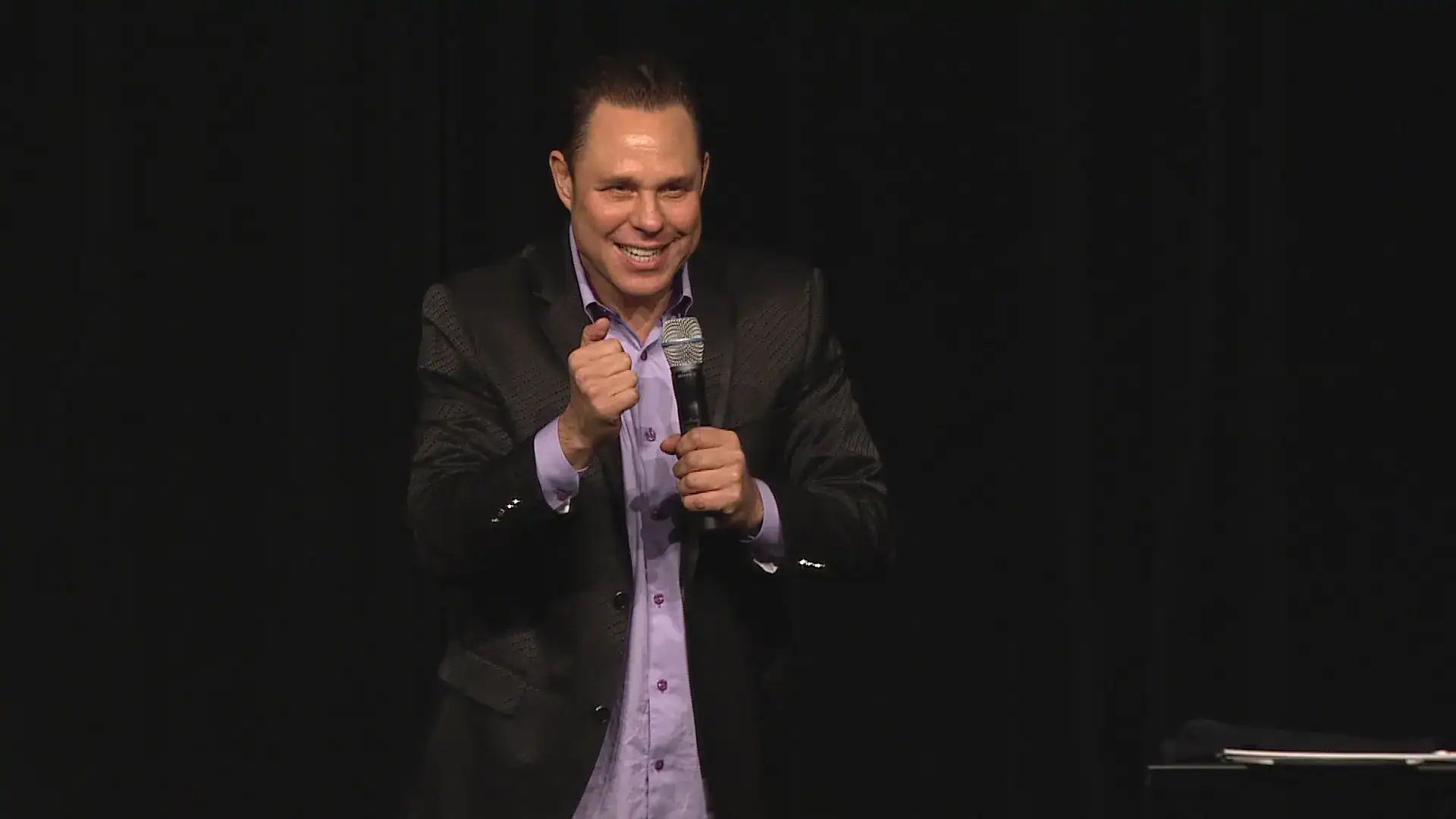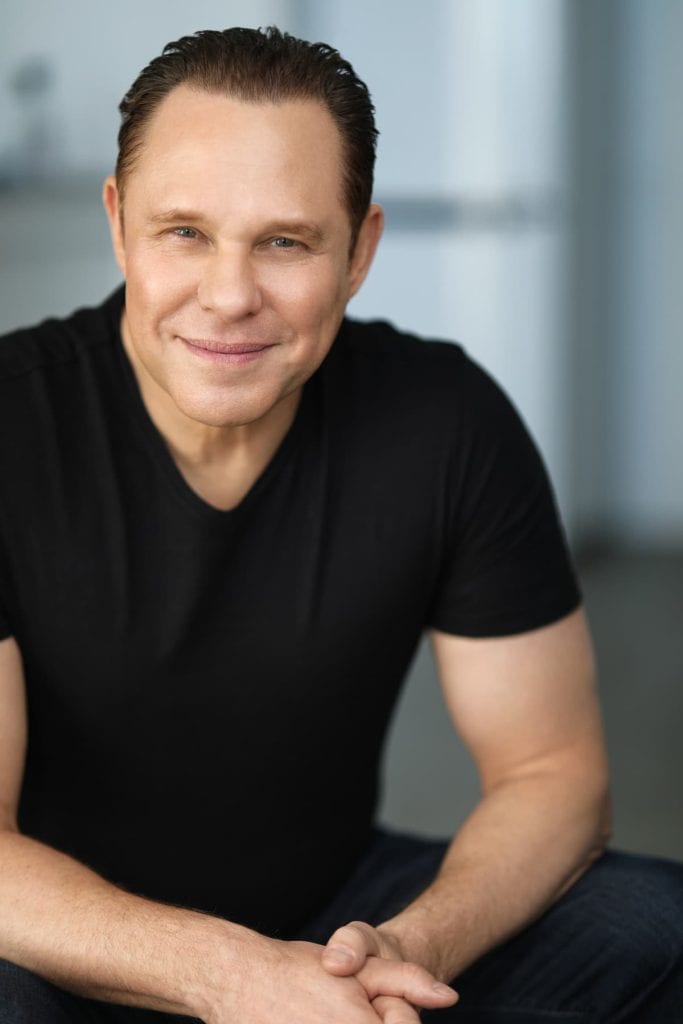Magic has always been about transformation. A card in your hand changes. A coin vanishes. A moment becomes reality. But the greatest sleight of hand I’ve ever performed has never happened on stage; it’s been the act of transformation.
After tens of thousands of performances in theatres and venues throughout North America, countless films, and audiences of all shapes and sizes, I’ve learned that the greatest magic act of all is the ability to change course at any given moment.
This is my journey. This is my case for why reinvention is not only possible, but necessary.
The First Act: Finding My Stage
I got my start in magic at the tender age of 5. Magic was my gateway to wonder. Magic was a way for me to experience the emotional experience from a front-row seat. Whether I was in conference rooms, theaters, or private events, we were all left spellbound by the same universal language of surprise, joy, and whimsy.
Those early years taught me how to read a room. But more importantly, they helped me learn something deeper than the tricks themselves. Magic wasn’t about the performance; it was about connecting, knowing where the performance could go based on interpersonal relationships and relatively simple notions, guiding people in real-time towards a desired outcome.
I learned how to command and maintain attention. I learned how to shift energy. I learned how to be in charge in every room.
It took a few years and hundreds of performances to realize that I was not only a magician, but a storyteller. And stories are malleable.
Related: Best Magicians in Vancouver
The First Transformation: Magician to Mentalist
People had seen all the card tricks they could stomach. I wanted to leave them with something new, something personalized and meaningful.
I entered the realm of mentalism. Instead of cards and coins, my stage presence allowed my audiences to experience psychological perception as a suggestion, performing mind-reading, chosen card reveals, and making guesses about what was on people’s minds.
Mentalism was more than tricks; it was educated intuition rooted in empathy and presence. I couldn’t just read my notes to guess which card you’d chosen. I had to understand group and individual dynamics without ever leaving the stage, getting into their minds, and reading between the lines.
This was my first lesson about reinvention: you don’t reinvent yourself and leave everyone in your past behind; you build upon what you know in order to expand.
The principles I learned from magic became my foothold for becoming a better mentalist.
As my act expanded into something bigger than just magic, big corporate clients began hiring me for conferences, banquets, and award ceremonies, which integrated all three mediums into one experience that made it palatable for even the most difficult of crowds: executives for Microsoft, Coca-Cola, and Disney. The stakes have never been higher. The lessons continue to resonate.
The Second Transformation: Performer to Entertainer
In today’s corporate landscape, entertainment means much more than having fun; it implies intentionality. Corporations seek curated experiences that foster team bonding potential, encourage breaking down barriers while simultaneously building them up, and inspire everyone involved to tap into their creative potential.
I learned how to combine magic, mentalism, and comedy into a single, all-in-one experience. Clean, concise professional experiences with intentional interactivity for even the most cynical audience member.
Every performance was a case study on group mentality and appeal. How do you gain the trust of a room full of engineers and accountants at 8 AM? How do you elicit laughter between strangers who have never met, such as those from HR and Finance? How do you create an atmosphere everyone remembers longer than the applause lasts?
Inherent in your ability to answer these questions lies your capacity for continual reinvention. Every audience is different; every performance requires a fresh perspective. Yesterday’s act will not suffice for today’s audience.
The Third Transformation: From Showman to Actor
As I perfected my craft in the limelight, another opportunity knocked: film. Acting on camera was a different form of storytelling.
I delved into indie thrillers and horror films, playing roles that were way outside my comfort zone. From psychological horrors to action flicks, acting forced me to find the truth in fiction.
My identity as a creator blossomed further. I had to learn patience, compromise, and vulnerability on set. Unlike the theatre, there isn’t an immediate return on your investment, no laughs, no ovations. You have to let it be. You have to give up control.
It also taught me that sometimes you have to take a leap of faith even when it’s scary. You must operate in darkness, outside of your own passionate niche, and allow things to take you where they will, trusting that they will give back in return.
The Fourth Transformation: From Entertainer to Writer
After years as a performer, I had plenty to say about what truly makes an experience worthwhile, especially in the business world. That’s how my book, Client Centric, came into existence: years of notes and observations on what works when serving others.
When I was twenty years old, I had a benign bone tumor removed from my leg. The surgery misfired three times. This most unfortunate event gave rise to my philosophy that, whether in entertainment or enterprise, it’s best to put yourself in your audience’s shoes.
Writing a book furthered the process of reinvention; it made me slow down and create structured lessons based on observations made during my lived experiences.

Why Reinvention is Necessary Now More Than Ever
The world comes at us rapidly. Things change, technology culls new opportunities in an instant. The job that was available yesterday will be nonexistent by tomorrow. Audiences shift. Expectations adjust.
Holding onto what once was is not secure; it’s dangerous. The security lies within adaptability.
Reinvention isn’t just something that happens; it involves a mindset. It entails three questions:
What works?
Be honest about what produces results and satisfaction.
What’s changing?
Understand what’s evolving; socially, technologically, and in relation to others.
What’s next?
Acknowledge where your curiosity will take you—even if it takes you somewhere uncomfortable.
Reinvention begins with curiosity and humility. You don’t need all the answers right away; you just need to set forth toward the next version of yourself.
Lessons Learned from a Life of Reinvention
After thousands of performances and three distinct careers, here’s what I’ve gleaned from the art of reinvention:
- There Is No Self
You are not a magician. You are not a mentalist. You are not a performer, author, or actor. You are none of these things. You ARE all of these things. Each title is a chapter in your life, not a prison sentence, and through each evolution, you become someone new.
- Learning Is Cumulative
Each time you reinvent yourself, the last incarnation informs the next. Understanding stagecraft helps in acting, and differentiating psychology aids in writing. Mastering verbal and non-verbal engagement propels all pathways.
- Failure Is Just More Information
Reinventing yourself means taking chances. Not every experiment works. But each failure eliminates pathways that aren’t right for you. It’s better to fail quickly and learn from the experience than to sit back and wait for the safe option.
- Wonder Leads to Reinvention
The most successful transformations begin with a simple question: What if? Follow that instinct; that’s the universe telling you that you’re ready to grow.
- Everyone Wants Magic
In every incarnation, the goal remains the same: to help others. Laughs, wonder, intrigue: put those in front of yourself.
Reinvention through Performance: A Magical Compilation
Analyst Audience Surprise
I once performed for a group of financial analysts. Let’s say they don’t typically expect to enjoy an hour of magic at the end of their day. I reinvented on-the-spot performance by relying more on mentalism than in-audience engagement, using visual jokes over humor, and incorporating tricks that seemed more logical than magical puzzles. By the end, they were leaning in with smiles upon their faces, engaged with me and each other. Reinvention opens doors.
An Unexpected Change During Quarantine
When the pandemic hit, live events were cancelled overnight. Instead of mourning what was lost and waiting for things to get better, I created virtual performances: a need-based service that brings a custom show to remote teams across the globe. The structure was different, but the mindset was the same: to create shared experiences through wonder. Reinventing like this saved my company during quarantine and helped it thrive post-COVID.
“Reinvention is not merely an option; it’s a necessity in style!”
The Psychology of Reinvention
We crave stability. Change is scary. Yet often when we perceive fear as loss, it’s merely shedding what confines us.
From a neurological perspective, novelty stimulates the release of dopamine, the brain’s reward molecule. That’s why learning something new is so invigorating. Reinvention embraces that natural order.
However, it’s not merely neurobiological; it’s meaningful. Your existence becomes more meaningful through evolution. Each subsequent transformation fine-tunes your purpose.
With every identity shift, from magician to mentalist, performer to actor, entertainer to author, it was never a trend to follow. Instead, it brought me closer to the truth, helping people think differently, feel deeply, and believe in the impossible.
How to Start Your Own Reinvention
If you feel the urge for change, start small.
Listen to the voices of change. Do you feel bored? Frustrated? Hoping to try more? Please don’t ignore it.
Audit your narrative. What identity elements benefit you? What inhibits you?
Try something new. A side project. A new medium. An alternative audience. Minimal risk; high reward.
Find mentors. Others who’ve tread this path before can give you borrowed bravery.
Community share. Open discussions about your desire to change will not only help create change but also hold you accountable.
Reinvention is not reinventing the wheel. It’s not abandoning what’s dear to you. It’s learning who you’ve become along the way and finally accepting it.
The Magic of Change
In magic, transformation happens in the blink of an eye: a silk scarf turns into fire; a dove takes off without feathers. In life, change occurs more gradually, but its impact is just as profound.
When you embrace change, you leave space for new wonders. You trade the comfort of stability for the thrills of exploration. You venture into the unknown and realize that it’s merely a home for growth.
That’s the illusion: thinking we’re set in stone.
We’re not. We’re malleable.
Final Thoughts
After forty years behind the curtain, in front of the camera, and on the page, I’ve learned that reinvention is the greatest act of creation one can experience. It takes courage, curiosity, and trust, and gifts you with perspective, resilience, and most importantly, purpose.
Magic taught me how to amaze other people. Reinvention taught me how to amaze myself.
So, if you’re at a crossroads, whether it’s a career change, a shift in hobby, or an identity crisis, don’t wait for permission. Take a step forward. The next version of you is waiting in the wings.
Because the real magic isn’t in the illusion, it’s in the change.


